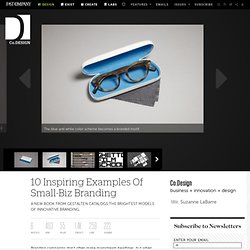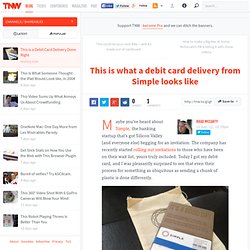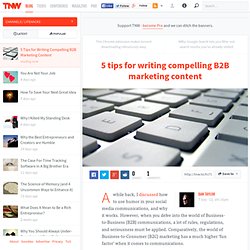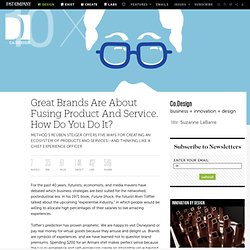

10 Inspiring Examples Of Small-Biz Branding. Branding campaigns don’t often make mainstream headlines, but when they do, they’re about the bigwig companies--Coca-Cola, Apple, and Nike, to name a few.

And we usually take notice only when brands go wildly and horribly astray--think Peter Arnell’s disastrous repackaging of Tropicana, or Gap’s unwelcome Helvetica logo. The real innovations in branding, however, are happening at small companies, which can experiment with daring and quirky concepts--without being beholden to executive boards, shareholders, or their own legacies. Some of the best examples are compiled in a new book titled Introducing: Visual Identities for Small Businesses from Gestalten. What makes these campaigns so successful? A strong visual identity, sure, but also a deep understanding of how these businesses define themselves (and their potential customers). Check out the above slide show, featuring identities for everything from a Zen-inspired dental practice to a bike shop specializing in hard-to-get parts.
21 Examples of Beautiful Package Design. For Web and print designers, packaging design is one of the most intriguing areas of design, because it involves creating something we can actually hold.

From the impressive unboxing experience inherent to brands like Leica and Apple, to the refined works of major brands like Coca-Cola and Starbucks, great packaging design changes and defines products people use every day. In case you’re inspired by that notion, we created a list of 21 examples of gorgeous packaging design to showcase exceptional work in this field. Even if you plan to never set foot in this industry, it’s well worth it to know what it’s all about — you may even learn a thing or two. Christmas Tea: Christmas Tea features a truly playful and functional design, where the evergreen-like packaging tears apart and sits on the rim of your cup.
This design wins in its simplicity. Kirei Towel: Getting clean is like erasing the dirt and debris off your skin. T & Cake: Birdy Juice: Cinder: The Ci in Cider becomes a winky face. This is a Debit Card Delivery Done Right. Maybe you’ve heard about Simple, the banking startup that’s got Silicon Valley (and everyone else) begging for an invitation.

The company has recently started rolling out invitations to those who have been on their wait list, yours truly included. Today I got my debit card, and I was pleasantly surprised to see that even their process for something as ubiquitous as sending a chunk of plastic is done differently. What’s interesting is not only the pouch in which the card sits, but also the cardboard to which it’s attached.
That blue portion, smartly covering the numbers (because you’re going to start seeing a lot of these pictures, and we don’t want another mess like this one), is a rubber band. There’s a perforation which will allow you to detach the bottom part of the card, and it includes a bit of cheeky text: 5 Tips for Writing Compelling B2B Marketing Content. A while back, I discussed how to use humor in your social media communications, and why it works.

However, when you delve into the world of Business-to-Business (B2B) communications, a lot of rules, regulations, and seriousness must be applied. Comparatively, the world of Business-to-Consumer (B2C) marketing has a much higher ‘fun factor’ when it comes to communications. Working in the B2B sector doesn’t mean that your communications have to step into the realm of boredom, though. In fact, if you apply the following five rules to your B2B marketing communications, you’d be well on your way to providing potential customers (i.e. leads) with valuable information, in an easy to read, remember, and perhaps most important, share format. 1.
Perhaps B2C marketers get a bit of a break, as they often craft their messaging with a storyline involved. When you complete your first draft, return to your data source and start hacking away at unnecessary items. 2. 3. 4. Great Brands Are About Fusing Product And Service. How Do You Do It? For the past 40 years, futurists, economists, and media mavens have debated which business strategies are best suited for the networked, postindustrial era.

In his 1971 book, Future Shock, the futurist Alvin Toffler talked about the upcoming “experiential industry,” in which people would be willing to allocate high percentages of their salaries to live amazing experiences. Toffler’s prediction has proven prophetic. We are happy to visit Disneyland or pay real money for virtual goods because they amuse and delight us. Brands are symbols of experiences, and we have learned not to question brand premiums. Spending $200 for an Armani shirt makes perfect sense because the luxury experience and self-expression create an intangible value beyond the mere cloth. Apple has been held up as the definitive example of how to integrate a brand and its products and services to create an extraordinary company. The iPhone is a product that delivers services and fulfills the promise of the Apple brand. 1.